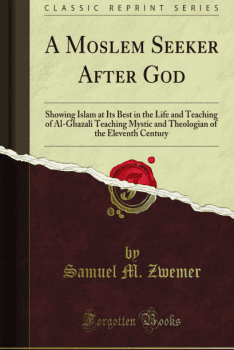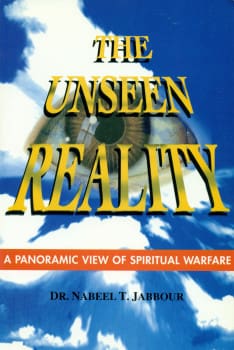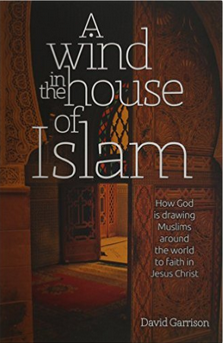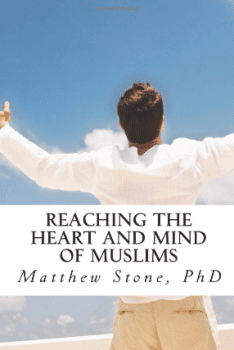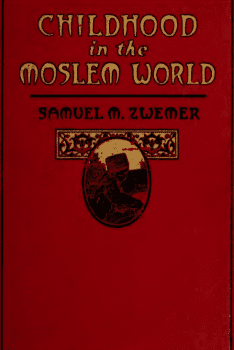5 Medieval Strategies for Explaining the Trinity to Muslims
Christian engagement with Muslims today ought to be highly relational and free from the expectation of or dependence on political power. Though an appropriate boldness and winsomeness in gospel proclamation should be celebrated, mission today among Muslims...
Cyril of Thessalonica (ca. 826-869) is remembered in mission history for his work among the Slavs and Arab Muslims in Samarra (modern Iraq) as well as Jewish and Muslim Khazars (southern Russia). He responded to the Byzantine emperor’s call to go to the Arabs, saying, “I will gladly go forth for our Christian creed.”¹ Later, the emperor described Cyril’s mission to the Khazars in these terms: “Go forth, philosopher, to these people, speak to them and explain to them the Holy Trinity.”²
In a recent article published in the International Bulletin of Missionary Research, I analyzed how Cyril the philosopher presented the gospel, Christ, and the Trinity and responded to the queries of medieval Muslim and Jewish thinkers. In this brief summary, I suggest that five of his strategies are commendable for Christians engaging Muslims today, while one approach should not be retained.
First, much can be learned from the philosopher from his presupposition that Scripture was authoritative and that historic Christian doctrine as articulated in the creeds was true. Cyril made no apologies for these commitments and he invited Muslim hearers to come and see the gospel on its own terms. In this sense, he was a faithful messenger of a message that he had no right to hedge or make more palatable.
Second, and quite related, in his conversations in Samarra and Khazara, Cyril argued almost entirely from the Old Testament Scriptures. This made much sense for his Jewish audience as he was approaching them from a shared text. However, this was also relevant for his Muslim listeners as well because Islam arguably bears more resemblance to Judaism than Christianity. Cyril was wise to make much of the Old Testament ideas of creation, law, and the prophets in his dialogues.
Third, Cyril and other medieval Christians did show themselves to be students of the Qur’an on some level. Though he did not view the Muslim holy book as authentic revelation necessarily, he did see it as a bridge to communicate ideas about God. In addition to studying the religion of the Arabs and Khazars, Cyril also proved to be a student of local language and culture so that he could effectively connect with his audience.
Fourth, Cyril established significant common ground with his audiences by proclaiming a Creator God. In one sense, his arguments are pre-Scriptural and pre-doctrinal. Initiating gospel conversations by focusing on the maker of heaven and earth is a meaningful approach not only among Muslims and Jews but also with other religious peoples such as animists.
Fifth, aside from Cyril’s specific dialogues about the Trinity, let us consider the overall diplomatic nature of the mission. Though we live in a post-Christendom world today in which kings no longer send missionaries, is there a place for missionary Christians to participate in diplomatic missions with a missional angle? While I would caution that such initiatives ought to be completely separate from the aims of a particular government, I can imagine a number of constructive scenarios where diplomacy and Christian mission are compatible today:
- When a Christian serving as a political envoy or in a diplomatic post witnesses unto Christ through personal relationships cultivated with members of other governments;
- When believing soldiers serving on peace keeping missions have a witness for Christ while tangibly protecting and serving the local population;
- When non-governmental international business leaders witness for Christ through building relationships in the process of developing new business outlets;
- When non-governmental leaders, including clergy and business leaders, reach out to global political leaders regarding human rights and religious liberties and have a natural, relational witness during those encounters;
- When qualified Christian peacemakers and mediators live out the gospel in word and deed as they mediate in global religious, political, or ethnic conflicts.
I am aware of some followers of Christ already at work in such scenarios. There seems to be space for such missional diplomacy and this merits further reflection.
Finally, if there is one thing that should probably not be recovered from Cyril’s practice, it was his use of polemics. This approach, shared by other Byzantine thinkers such as Theodore Abu Qurrah, John of Damascus (676-749), and Nicetas of Byzantium (842-912), presupposes a level of political protection in a Christendom context. Also, these theologians seemed free to express themselves as they did because they wrote about Muslims from a safe distance. Though employing polemics, Cyril was distinct from these Byzantine apologists because he actually connected with Muslims on a personal level.
Christian engagement with Muslims today ought to be highly relational and free from the expectation of or dependence on political power. Though an appropriate boldness and winsomeness in gospel proclamation should be celebrated, mission today among Muslims ought be a witness from below—from a place of vulnerability, service, and relationships. In sum, the post-Christendom, globalized twenty-first century may actually provide the best environment for Christian-Muslim relations and an authentic Christian witness. Read the full article in the International Bulletin of Mission Research.
For other articles by Ed Smither on missiological strategies in Christian history, see Peaceful Martyr: The Life and Mission of St. Francis.
The quotes come from sections of the “Life of Cyril.” The English translation is from “Life and Acts of Konstantin,” in Kiril and Methodius: Founders of Slavonic Writing, ed. Ivan Duichev, trans. Spass Nikolov (New York: Columbia Univ. Press, 1985).
- Life of Cyril section 6
- Life of Cyril section 8
This is a shortened version of a published article in the International Bulletin of Mission Research.
